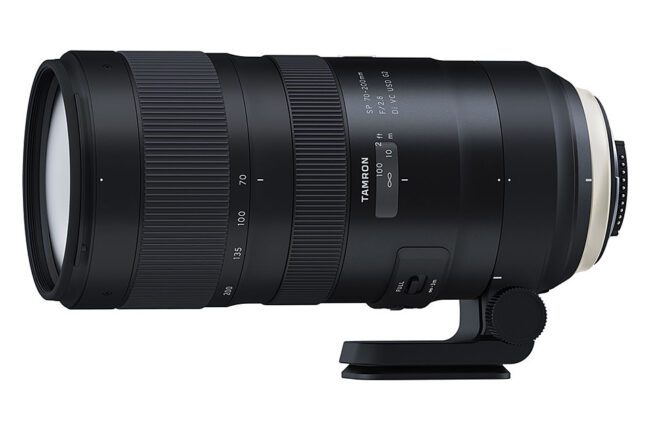It is always exciting to see great lens announcements, because lenses play such a huge role in making images and making them appear special. This week we have seen two such announcements from Tamron. Without a doubt, the most exciting announcement is the Tamron SP 70-200mm f/2.8 Di VC USD G2 designed for full-frame cameras from both Nikon and Canon. I am personally intrigued by the Tamron SP 70-200mm f/2.8, since that lens is going to retail for a mere $ 1,299 – that’s less than half the price of what Nikon sells its high-end Nikkor 70-200mm f/2.8E FL VR for! I don’t know how Tamron managed to price its 70-200mm so low, but at this price, I almost wonder what corners Tamron had to cut to make it happen. After reviewing its MTF charts and other lens specifications, I could not really find any…
Let’s just straight into it and compare the Tamron SP 70-200mm f/2.8 VC to the Nikon 70-200mm f/2.8E VR.
Tamron SP 70-200mm f/2.8 Di VC USD G2
While the Tamron SP 70-200mm f/2.8 VC might not have the exotic fluorite glass to make it lighter, it only weighs 55 grams heavier than the Nikon 70-200mm f/2.8E VR, so we could say that there is practically no weight difference between the two. It also measures 191.3mm in length, whereas the Nikkor is 202.5mm, so the Nikkor is a tad longer in comparison. Both lenses feature 9-blade rounded diaphragm and the same minimum and maximum aperture. While the two lenses are image-stabilized, the Tamron claims a 5 stop compensation, whereas Nikon claims to have around 4 stops of compensation. Hard to say whether Tamron can really go beyond Nikon’s excellent VR system, but if it manages to compensate up to 4 stops, it is already as good as the Nikon. The optical construction of the Tamron is comprised of 23 elements in 17 groups, whereas the Nikon 70-200mm f/2.8E VR has a pretty similarly complex construction with 22 elements in 18 groups. Both are weather-sealed to perform in all kinds of challenging environments. Let’s take a look at the projected MTF performance of both lenses to see if we can spot major differences:

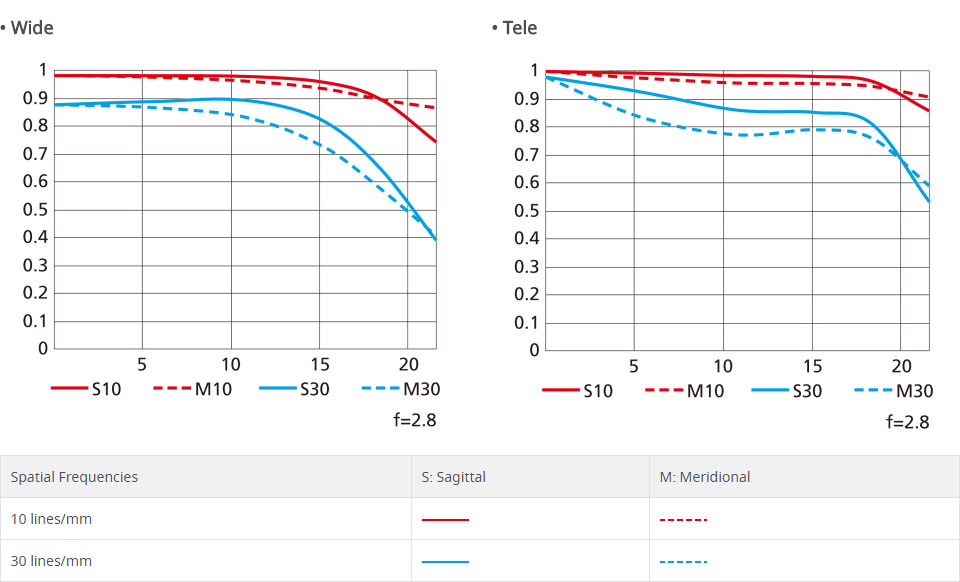
Although MTF charts speak little of the overall performance of the lens, since they are shown at maximum aperture for only two focal lengths on a zoom lens, we can get an idea of what to expect from a given lens. In this particular case, the Tamron SP 70-200mm f/2.8 VC G2 is claiming to be a better lens in terms of sharpness at 70mm – you can see that the edges get towards the 0.6 mark, whereas the Nikon drops below 0.4. The same goes for contrast, where Tamron is claiming to have higher contrast. And for the telephoto range, we see a similar picture again – the Tamron SP 70-200mm f/2.8 VC G2 is showing better contrast and much better overall sharpness at maximum aperture, which would be shocking to see, if it turns out to be true. Such sharpness does seem to come at an expense though – see how the sagittal and meridional lines separate? It means that the Tamron should have slightly worse bokeh performance in comparison. How much worse is something we are going to have to see when I test the two lenses side by side later this year when the lens becomes available. I seriously doubt the bokeh difference is going to be drastically different between the two though. The Tamron does not have any aspherical lens elements, so I expect its bokeh to be smooth, without any onion-ring artifacts.
It is worth noting that there might be an advantage to the Nikon 70-200mm in terms of focus breathing – based on the previous generation 70-200mm and its magnification ratio, the Tamron is likely to exhibit focus breathing, while Nikon addressed that issue for the most part in the new 70-200mm design.
If Tamron truly does manage to bring us a 70-200mm with better performance characteristics than the Nikon, it will be the end game for the Nikon, mainly because of its ridiculously high price tag of $ 2,700. I can see the Tamron 70-200mm selling like hotcakes compared to the Nikon. Way to go Tamron!
You can find out more about the lens by visiting the Tamron SP 70-200mm f/2.8 Di VC USD G2 in our lens database.
Tamron SP 70-200mm f/2.8 Di VC USD G2 Official Press-Release
Below is the official press-release from the manufacturer:
February 6, 2017, Commack, NY – Tamron, a leading manufacturer of optics for diverse applications, announces the launch of SP 70-200mm F/2.8 Di VC USD G2 (Model A025), a new telephoto zoom lens product for full-frame and APS-C DSLR cameras. Model A025 was developed by substantially enhancing the features of its predecessor.
These include a thorough review of the optical, mechanical and electronic designs to increase autofocus speed and precision, reinforce VC (Vibration Compensation) functions and to shorten the MOD. New features include eBAND Coating, Moisture-Proof and Dust-Resistant Construction, Fluorine Coating and compatibility with teleconverters. The lens design features a metal-based barrel for improved handling and ease-of-use. The result of this dramatic evolution is Model A025, a high-speed telephoto lens that widens the scope of expression for photography in a broad range of genres, such as portraits, landscapes, sports and photojournalism. The lens is expected to be available in the U.S. in March at $ 1299.
PRODUCT HIGHLIGHTS
- Outstanding resolution and contrast reproduction performance, beautiful bokeh and full compatibility with Tamron teleconverters
Based on the current model (A009), the optical design has been revised and improved. Both the resolution and contrast reproduction performance far exceed the present levels. Bokeh has been enhanced and expanded to deliver outstanding background effects across the entire zoom range. Use of a circular diaphragm with nine blades further improves bokeh. The optical design of the new A025 consists of 23 elements in 17 groups. Optimum deployment of XLD (eXtra Low Dispersion) and LD (Low Dispersion) glass elements thoroughly eliminate chromatic aberrations, which tend to become particularly prominent in high-speed telephoto lenses, across the entire zoom range, while ensuring uniform, high-level image quality even on the periphery of the image plane.The new lens is also fully compatible with the TELECONVERTER 1.4x (Model TC-X14) and TELECONVERTER 2.0x (Model TC-X20)1, which increase the focal length of the lens to 1.4 times and 2 times the original, respectively. Both teleconverters are carefully designed and constructed to provide outstanding high quality.
- Improved VC system provides highest Vibration Compensation ability in its class (5 stops using CIPA standard compliant) and offers three situation-specific VC modes
Utilizing Tamron’s original VC (Vibration Compensation) system, which uses a moving coil mechanism, further reinforcement of the drive system power and control performance has now achieved the highest VC level in its class, with an image stabilization performance of 5 stops according to the CIPA standard (using VC Mode 3).Also, the VC system of Model A025 offers three VC modes, including one mode exclusively for panning. Photographers can freely choose between the different VC modes according to their shooting conditions. Even when telephoto shooting in low light, which tends to be severely affected by camera shake, photographers can now enjoy jitter-free handheld shooting with much greater flexibility.
- VC MODE 1 is the standard mode that strikes a great balance between the stability of the viewfinder image and the stabilization effects.
- VC MODE 2 is exclusively used for panning.
- VC MODE 3 prioritizes the stabilization of the captured images and forgoes the stabilization of the viewfinder image.
With the optional accessory TAMRON TAP-in Console, you can customize the configuration of VC MODE 1. Choose the viewfinder view of either standard or image priority.
- Demonstratively improved autofocus speed and responsiveness
Model A025 is equipped with a USD (Ultrasonic Silent Drive) ring-type ultrasonic motor, whose outstanding responsiveness and control ensures accurate high-speed focusing. Incorporating two advanced, high-performance microcomputers and optimizing the algorithm has improved both the focusing speed and accuracy compared with SP 70-200mm (Model A009). Additionally, thanks to the Full-time Manual Focus override mechanism, photographers shooting with AF can instantaneously make fine focusing adjustments using MF without wasting time by switching the AF-MF mode back and forth.- Focuses closer (shorter Minimum Object Distance, or MOD) for greater versatility
Improvements made to the focus cam and zoom cam inside the lens barrel have reduced the MOD from 50.7 inches in the older Model A009 to 37.4 inches for Model A025, which has a maximum magnification ratio of 1:6.1. The shorter MOD, coupled with the excellent optical performance of the SP 70-200mm (Model A025), allows photographers to further broaden their range of expression.- Optimized and exclusively designed eBAND Coating
The new A025 features Tamron’s original eBAND (Extended Bandwidth & Angular-Dependency) Coating, a technology that combines a nano-structured layer with an extremely low refractive index with the conventional multiple-layer coatings. Optimized and exclusively designed for this new zoom, the eBAND Coating provides superior anti-reflection performance, effectively reducing any flare and ghosting. Even when taking backlit portraits, the new lens delivers flawless, crystal clear images.- Moisture-Proof and Dust-Resistant Construction
Ideal for use in outdoor photography, the new 70-200mm telephoto zoom has moisture-resistant construction because special sealants that are dust-resistant and moisture-resistant are used at every joint and seam. The sealant material helps to prevent the intrusion of any dirt, dust or water droplets, compared to conventional Moisture-Resistant Construction.- Fluorine Coating for greater protection
The front surface of the lens element is coated with a protective fluorine compound that is water- and oil-repellant. The lens surface is easier to wipe clean and less vulnerable to the damaging effects of dirt, dust, moisture and fingerprints.- Electromagnetic diaphragm system now used also for Nikon-mount lenses
An electromagnetic diaphragm system, which has been a standard feature for Canon-mount lenses, is now available for Nikon-mount lenses. More precise diaphragm and aperture control is possible because the diaphragm blades are driven and controlled by the motor through electronic pulse signals.- Lightweight and easy-to-hold tripod mount is compatible with Arca-Swiss style quick release plates
A new textured grip and Arca-Swiss style tripod interface enhances both speed and utility. Because the tripod mount is made of lightweight magnesium, it is much easier to carry.- Compatible with TAMRON TAP-in ConsoleTM, an optional accessory product
The optional TAP-in Console provides a USB connection to a personal computer, enabling users to easily update the lens firmware as well as customize features, including fine adjustments to the AF and VC.- Based on the rigorous quality standards worthy of the SP series, this new lens is manufactured with a thorough attention to details
For the SP series products in particular, Tamron has established rigorous design and quality standards. These standards apply to the optical design, mechanical design and the cosmetic appearance, as well as to such wide-ranging areas as the product’s robustness and improvements in the various individual functions. Tamron thoroughly reviews all of the design and manufacturing processes in order to offer products to customers with even-higher levels of precision and quality.For the SP 70-200mm G2 (Model A025), the optical design was refreshed, mechanical parts were improved and a new exterior design was adopted. To maximize the optical performance intrinsic to this product, Tamron improved the accuracy of the component parts and increased the precision of the overall zooming mechanism.
Tamron 10-24mm f/3.5-4.5 Di II VC HLD
Another update is the Tamron 10-24mm f/3.5-4.5 Di II VC HLD lens designed for APS-C cameras, which replaces the previous generation Tamron 10-24mm f/3.5-4.5 Di II. This particular release by Tamron is another attempt to steal some market share from Nikon, since it directly competes with Nikon’s AF-S DX NIKKOR 10-24mm f/3.5-4.5G ED.
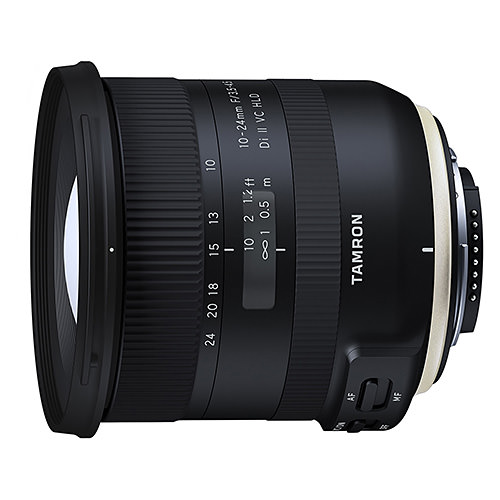
With a price tag of $ 499, this lens is bound to outsell the Nikon, which retails for $ 899 – another huge price difference. The Nikon is clearly an inferior lens, as it does not have image stabilization and the technology we see in the Tamron 10-24mm is also better: fluorine coating, moisture-resistant construction, molded glass and hybrid aspherical elements, plus the ability to tweak autofocus via a Tap-in console. That’s a lot to ask for a low price of $ 499!
Let’s take a look at the MTF performance of the two lenses:
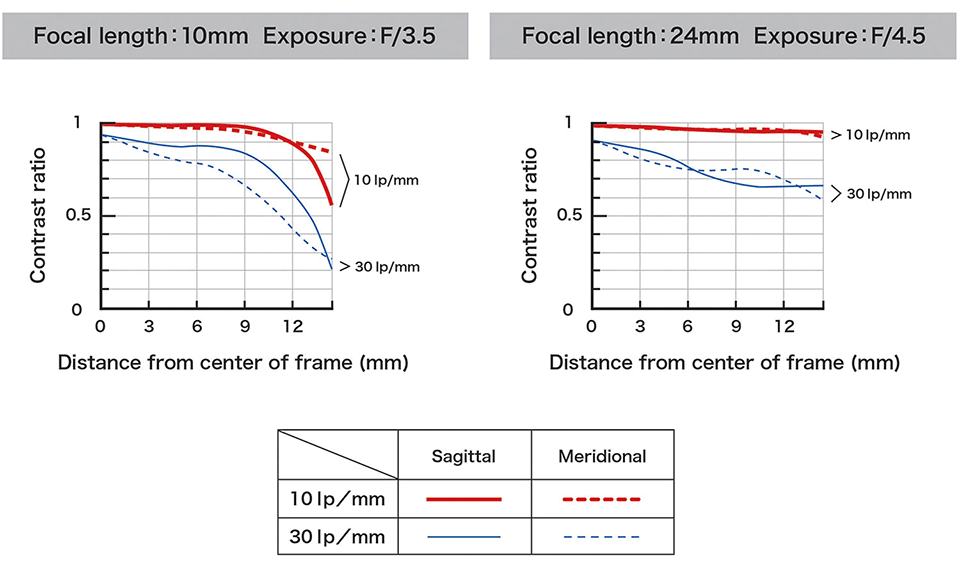
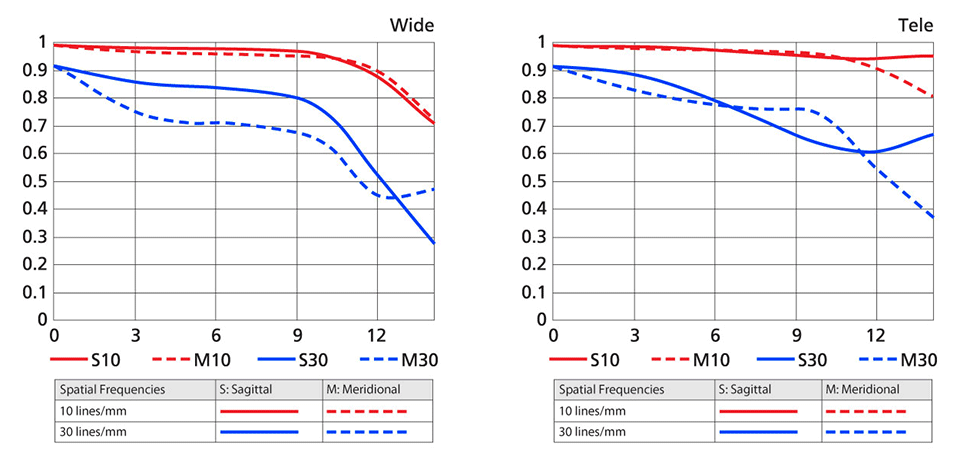
At 10mm, both lenses seem to be as good in terms of center performance, but once you look at the extreme edges, the Nikon 10-24mm looks a tad better. Contrast on the Tamron 10-24mm also looks slightly worse towards the edges. Zoomed into 24mm, both lenses have about the same contrast and overall sharpness, so there are practically no differences there.
Again, these performance differences are projected and only show wide open performance. If the Tamron performs as good or better than the Nikon when stopped down to the f/5.6-f/8 range, it will be another nail in the coffin of the Nikon 10-24mm f/3.5-4.5G, since the price difference between the two is huge.
Both lenses are supposed to ship in spring of 2017 – you can find the pre-order information in the links below.
Tamron 10-24mm f/3.5-4.5 Di II VC HLD Official Press-Release
Below is the official press-release from the manufacturer:
February 6, 2017, Commack, NY – Tamron, a leading manufacturer of optics for diverse applications, announces the launch of 10-24mm F/3.5-4.5 Di II VC HLD (Model B023), a new ultra-wideangle zoom lens for APS-C DSLR cameras. The lens is expected to be available in the U.S. this Spring at $ 499.
Model B023 is a wideangle zoom lens that covers an exceptionally large range—the largest focal length range in its class1 (35mm equivalent is 16mm to 37mm). The lens is ideal for street photography, landscapes, group photos and casual everyday scenes. In 2008, Tamron launched the SP AF 10-24mm F/3.5-4.5 Di II LD Aspherical [IF] (Model B001) that provided an unprecedented focal length range in its class. Building on that lens’s popularity, the successor Model B023 has improved optical performance and new features. It embodies Tamron’s most advanced technologies, including the VC (Vibration Compensation) system, Moisture-Resistant Construction and Fluorine Coating, and the first implementation of Tamron’s new HLD (High/Low torque modulated Drive). Additionally, the Model B023 has a refreshing new design derived from the design of the new product lineup in the SP series.
PRODUCT HIGHLIGHTS
- Inheriting the broadest focal length range in its class of ultra-wideangle zoom lenses
The new Model B023 achieves a broad focal length range of 10-24mm, the largest range among ultra-wideangle zoom lenses for APS-C DSLR cameras. This is the 35mm equivalent of covering a very wideangle of view, from 16mm ultra-wideangle to 37mm semi-wideangle. A photographer can enjoy diverse wideangle expressions with just this one lens, from dynamic landscapes far beyond the normal human field of vision to simple, casual snapshots.- Improved optical performance across the entire zoom range
The optical design of the new Model B023 consists of 16 lens elements in 11 groups. Special lens elements are utilized in an optimum configuration of one LD (Low Dispersion) lens element, one XLD glass element, one molded glass aspherical element, and one hybrid aspherical lens. While curbing an increase in the size of the optical system, the new lens very effectively compensates for a wide variety of aberrations in the entire zoom range, including transverse chromatic aberration, comatic aberration and distortions that tend to become more prominent with a wideangle lens.Tamron’s highly regarded BBAR (Broad-Band Anti-Reflection) Coating and the optical design paying close attention to internal reflections in the lens barrel also curb the effects of harmful light rays that tend to occur with a wideangle lens, achieving excellent resistance against ghosting and flare seen in backlighting situations.
- 4-Stop Vibration Compensation that is especially useful in low light conditions
In response to the requests of many customers who have asked the company to equip a wideangle lens with image stabilization, we have now installed Tamron’s acclaimed VC (Vibration Compensation) on the new Model B023. Optimizing the actuator and the control algorithm has made it possible to incorporate the VC, while maintaining the compact design of the previous Model B001. The VC especially enhances the photographer’s freedom in handheld shooting at dusk or in a dimly lit room, and under other relatively low light conditions, as the mechanism proves particularly effective in the shooting conditions with slower shutter speeds.- Equipped for the first time with the new HLD with outstanding driving power and stability
Tamron’s new HLD (High/Low torque modulated Drive) has been developed for use as the AF drive system for Model B023. With its outstanding driving power and stability, the HLD is capable of smoothly controlling the AF mechanism of the new Model B023 that is actually equipped with large focusing lens elements. When shooting in AF mode, the Full-time Manual Focus override allows you to instantly make fine focusing adjustments manually, without having to switch between modes.- Compressed into a compact body with structural ingenuity
While enhancing image quality, adding new functions and substantially improving the basic performance, Model B023’s space-saving design has ensured an optimum configuration for components such as the VC and AF unit, thus successfully reducing overall length compared to the previous Model B001. The lightweight and compact body with outstanding ease of use will prove to be very well-balanced when attached to an APS-C DSLR camera.- An even more user-friendly lens with Fluorine Coating and Moisture-Resistant Construction
The front surface of the foremost lens element is coated with a protective fluorine compound that is water- and oil-repellant. The lens surface is easier to wipe clean and is less vulnerable to the damaging effects of dirt, dust, moisture and fingerprints, allowing for much easier maintenance. For greater protection when shooting outdoors, leak-proof seals throughout the lens barrel help protect your equipment.- Electromagnetic diaphragm system now used also for Nikon-mount lenses
An electromagnetic diaphragm system, which has been a standard feature for Canon-mount lenses, is now employed in Nikon-mount lenses2. More precise diaphragm and aperture control is possible because the diaphragm blades are driven and controlled by a motor through electronic pulse signals.- Compatible with TAMRON TAP-in Console, an optional accessory product
The optional TAP-in Console provides a USB connection to your personal computer, enabling you to easily update your lens’s firmware as well as customize features including fine adjustments to the AF and VC.- External design placing importance on functionality and ease of use
While inheriting the design that makes use of a lot of organic curves and the delicately polished form down to fine details that characterize the SP lens series, the new Model B023 comes with a highly sophisticated design that also places much importance on the lens’s functionality and ease of use, featuring an overall form that faithfully encompasses the internal structures within, a slim Luminous Gold brand ring, the switch shape and the distance-scale window design.
Pre-Order Information
You can pre-order both lenses using the links below:
- Pre-order Tamron SP 70-200mm 2.8 Di VC USD G2 from B&H Photo Video for $ 1,299 / Canon EF mount
- Pre-order Tamron 10-24mm f/3.5-4.5 Di II VC HLD from B&H Photo Video for $ 499 / Canon EF mount
Kudos to Tamron for bringing out such amazing lenses. These will put a lot pressure on Nikon’s pricing, so I am expecting to see some big discounts heading our way this holiday season.
The post Tamron’s SP 70-200mm f/2.8 VC G2 and 10-24mm Lenses to Challenge Nikon appeared first on Photography Life.

